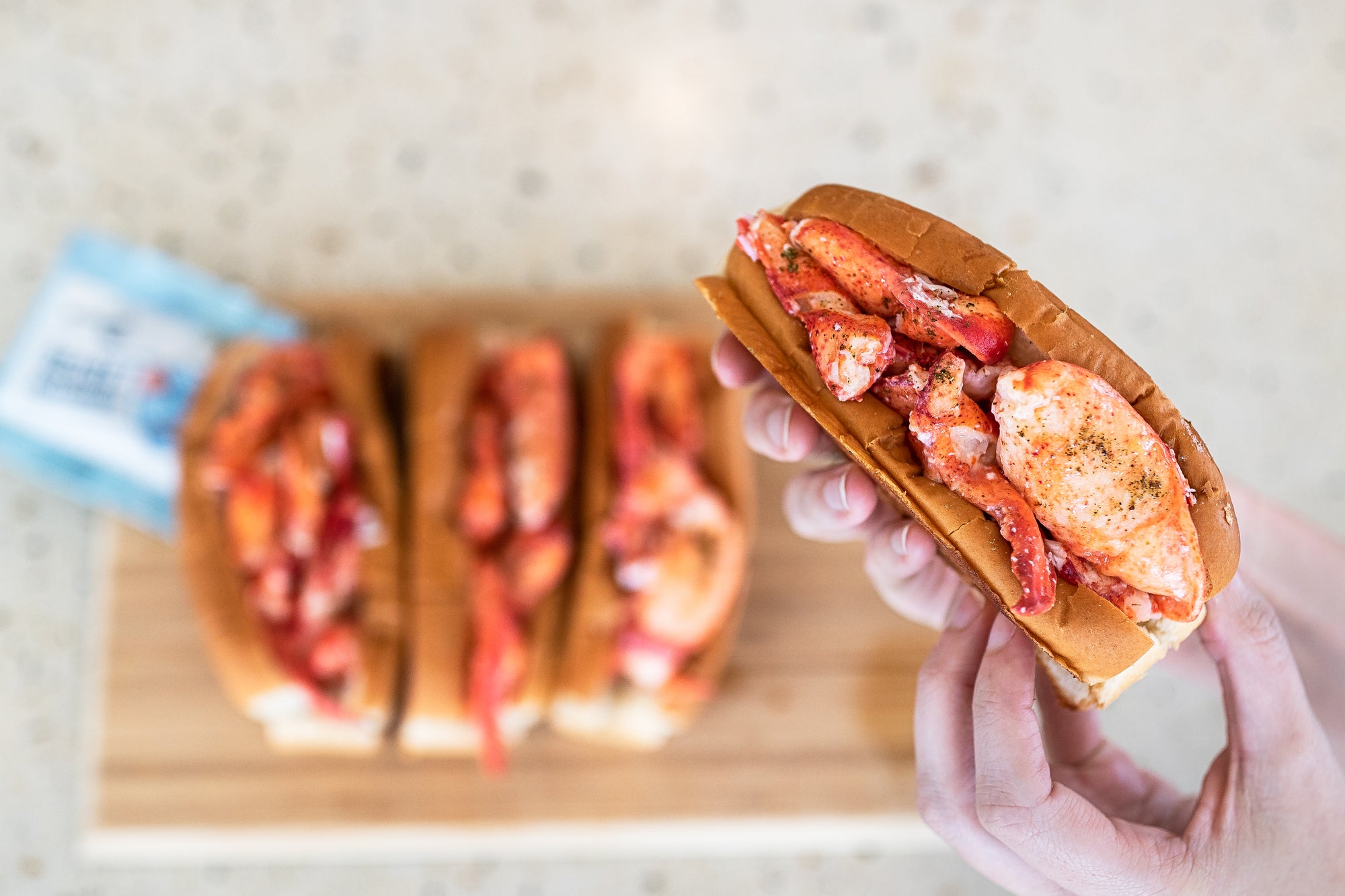
A Guide to Preparing the Best Maine-Style Lobster Roll
Lobster rolls are a classic New England dish beloved far and wide. Lobster lovers everywhere hold strong, differing opinions on how to make the best lobster roll.
There are two primary types of lobster rolls: the Maine-style and the Connecticut-style. The Maine-style is served at all of our shack locations.
While the final product may look similar, these two variations render drastically different temperatures, tastes, and textures. Before we get into the nitty-gritty of this long-held rivalry, we want to let you in on a secret: it doesn’t take a master chef to make a great lobster roll. It takes great lobster.
LET’S TALK LOBSTER MEAT

It’s simple, the key to a great lobster roll is great lobster meat. We partner with fishermen who follow strict gear and catch regulations to prevent overfishing and protect lobsters. This includes not harvesting egg-bearing females and only keeping lobsters that are of a certain size. These lobstermen harvest exclusively along the North Atlantic coast, where the ocean's cold temperatures make for the best tasting lobster.
When you spend your dollars on lobster sourced using sustainable methods, you’re supporting the effort to protect the oceans and fisheries so that lobster can be enjoyed for years and generations to come.

The next and arguably most important factor is how your lobster is cooked. Did you know that different parts of the lobster need to be cooked to different temperatures?
This is because some sections of meat are more dense and fibrous than others. When you place a whole lobster in a pot, each part will cook at different speeds, putting the lobster meat at risk of overcooking and becoming chewy, or worse, undercooking. If that potential risk doesn’t phase you, use this guide to cook your live lobsters at home.
Part of the fun of eating a lobster whole is cooking, but for a lobster roll, we want each bite to be tender and consistent. We prefer to use lobster meat that has been perfectly steamed at our processing facility in Saco, ME, where we use advanced equipment to ensure that every section of the lobster is cooked perfectly.

So, which part of the lobster is best for the roll? There are plenty of options from the tail, knuckle, claw, body, legs, and even the flippers, but the bulk of the lobster meat lives in the tails and claws.
In the tail, you’ll find the meat has a firmer texture when compared to the claws, which are softer and almost silky to the touch. The knuckle meat’s texture is similar to the claws and together, these two output the sweetest, tenderest meat of the bunch. Plus, the claw and knuckle meat is conveniently bite-size, right out of the shell!
Opting for chopped tail meat will also work, but we’d recommend saving the tails for a more authentic experience. It’s almost as if lobster knuckle and claw meat were made to be used in lobster rolls and the soft, succulent consistency makes ‘em the best choice around.
LET’S TALK PREPARATION

It’s time to decide which form of lobster you want for your roll. If you still want to start from a whole lobster, we support your mission and offer you this guide to lobster where you will learn to crack ‘em open like a pro at home. Although this process can be fun, it can become a bit labor-intensive for a roll.
If you go with whole lobster, in order to make two lobster rolls, you’ll need to pick two to three 1.5 lb lobsters, which will result in around a half-pound of lobster meat. If you’re a knuckle and claw person like us, grab an extra whole lobster to make up for the lost tails!
Choosing ready-to-eat lobster meat is not only convenient, but it has unmatched quality, and gives you the freedom to select your preferred part of the lobster. Plus its usually comes by the pound making it easier to split amongst 2-4 rolls.
Don’t stress about frozen versus fresh for prepared lobster meat. There’s no denying that the taste of a lobster fresh off the docks is unmatched, but not everyone has easy access. Given the various factors that go into it staying in pristine condition on the journey to you, obtaining fresh lobster can be a tall task.
It becomes a logistical decision, and that’s why we turn to flash-frozen lobster, but not any freezing method will do. Lobster meat is sensitive to freezing, so to preserve fresh-like sweetness and texture, it needs to be frozen as fast as possible.

Frozen or fresh, there is no need to reheat! If you are keeping score, this is where the rivalry picks up between the chilled lobster in the Maine-style roll versus the warmed lobster served in the Connecticut-style roll. Some say this choice comes down to preference, but let's review the facts.
Lobster comes out of the shell fully cooked and ready to eat, so any added heat will only alter the integrity of the meat. It is important to stop the cooking process immediately when cooking lobsters at home, by placing them in an ice bath. Frozen products should never be thawed using heat, but only slowly in the fridge over 16-24 hours. Check out our guide if you want to know more about freezing and thawing best practices.
As a rule of thumb, keep that lobster meat chilled because reheating is bound to lead to a chewier texture. Since that debate is settled....
LET’S ASSEMBLE THE LOBSTER ROLL

What other ingredients go into a Maine-style lobster roll? First off, we believe lobster rolls should be a pure, unadulterated treat. The goal should always be to let the true flavor of the lobster meat shine through. That means skipping out on mixing any fillers like lettuce or celery that can steal the spotlight.

The roll starts with a classic New England split-top bun with shaved sides that are butter toasted to create a warm, crispy foundation for the chilled and tender lobster meat. Then, the condiments: Connecticut-style lobster roll fans believe hot, melted butter is the only way to go, while Maine-style fans are loyal to mayo. Using either, neither, or both are all acceptable routes, but layering those extra ingredients is the best way to elevate the already perfect flavor of the lobster meat.
If you’re looking for a simple take on a lobster roll, this is our go-to roll recipe. No matter your additives, as long as you use high-quality lobster meat in its purest form and intentionally layer your ingredients, you will have figured out how to make the best lobster roll around, Maine-style.





